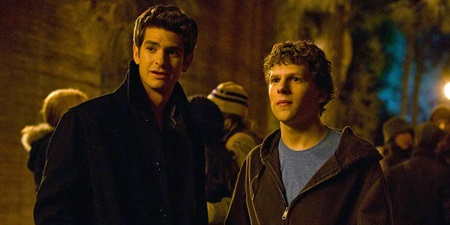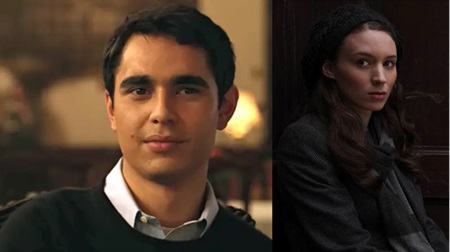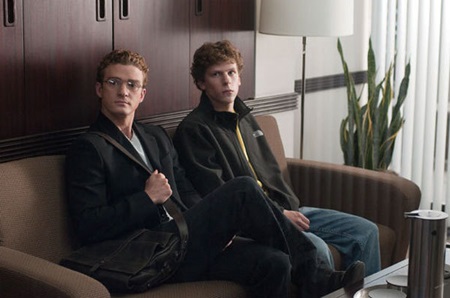The 2009 book The Accidental Billionaires: The Founding of Facebook: A Tale of Sex, Money, Genius and Betrayal by Ben Mezrich was a large influence on attracting the screenwriting services of Aaron Sorkin to the table for the movie we’re reviewing. The David Fincher directed movie The Social Network (2010) earns our attention today.

The movie The Social Network begins in the fall of 2003 with the fictionalized Erica Albright, a student at Boston University as portrayed by Rooney Mara, dumping Mark Zuckerberg. Zuckerberg, portrayed by Jesse Eisenberg in the movie and feeling scorned, insults Albright on his LiveJournal blog. Fueled by that scorn and alcohol into doing something noteworthy, Zuckerberg creates a precursor to Facebook called Facemash wherein he hacks individual online databases at Harvard University for pictures of female students, later posting the photos online while asking fellow students to rate the girls on physical attractiveness.

Many, many people took notice of the cynical tackiness of the approach in addition to the wild popularity of scheme led to a segment of Harvard‘s computer servers crashing not due to the initial breaches but due to the volume of people engaging in the ranking. Also taking notice were Cameron Winklevoss, Tyler Winklevoss and Divya Narendra, who had a vision for a social media network.

The trio invited Zuckerberg to develop a social media network for them, with Zuckerberg seemingly agreeing to the proposition while immediately turning to his friend Eduardo Saverin for seed money to develop a social media platform that would grow into the modern day Facebook. Narendra was portrayed by Max Minghella. Saverin was portrayed by Andrew Garfield. A physical and digital combination of Armie Hammer and Josh Pence portrayed Cameron Winklevoss and Tyler Winklevoss.

The introduction of Sean Parker as portrayed by Justin Timberlake was introduced to filmgoers through litigation brought in separate concurrent claims against Mark Zuckerberg and Facebook by Winklevoss, Winklevoss and Narendra on the one hand and Saverin on the other. Sy as portrayed by John Getz and Marilyn Delpy as portrayed by Rashida Jones were serving the Zuckerberg point of view. The drama for how the different interests of what became Facebook, in both scale and profitability, were at stake in the litigation. That very real human drama was dramatized in the movie was the cinematic point.

That the movie The Social Network did a solid job of communicating the drama of growth, ambition, substance use, sex and greed were all strongly in evidence in making a moving story for this movie. The acting met the task of conveying the story for me, with kudos from me on that level as well. I give the David Fincher movie The Social Network 4.25-stars on a scale of 1-to-5.
Matt – Saturday, January 6, 2024




